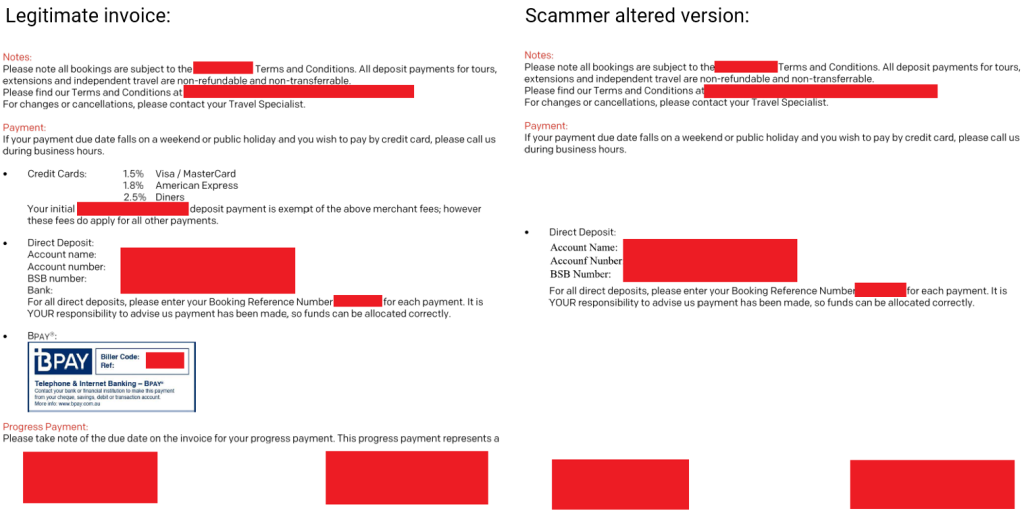
A warning from the Australian Competition and Consumer Commission (ACCC) about the prevalence of fake invoice scams has highlighted the massive amount of money that Australians lost to the rip-off scheme last year. So what is a fake invoice scam, and how can you keep safe from them?
The ACCC revealed that in 2023 Australians lost a total of $16.2 million to scams that revolved around sending victims a fake invoice and requesting payment. The consumer watchdog has now warned Aussies to always make sure they check payment details directly with a business before fulfilling an invoice.
What are fake invoice scams?
The ACCC’s deputy chair Catriona Lowe pointed out how the criminals conducting the fake invoice scams are “becoming more targeted” in how they attack their prey, and described how the scams work.
“These criminals are posing as genuine businesses that a consumer has recently dealt with, sending fake invoices with altered payment details so that the money ends up with the scammer,” Lowe said in a statement.
As well as posing as companies that the victims recently worked with, scammers are also able to keep unsuspicious by posing companies from industries that would typically invoice for high amounts of money, such as:
- Real estate agencies.
- Law firms.
- Construction/trade businesses.
- Car dealerships.
- And even travel agencies.
“This scam is hard to detect because the scammer will either hack into the email system of the business or impersonate the business’ email address by changing as little as one letter,” explained Lowe.
One man reported to the ACCC that he lost $35,000 after criminals managed to impersonate the email account of a car dealership he was buying a car from, so it’s important to know what the scam looks like.
What does a fake invoice scam look like?
The scam artist trying to send a fake invoice will try as best as they can for the payment request they send to look and feel like the real thing.
However, the telling feature might be when the details of the account you are being told to send your money to looks different from the rest of the invoice. An example of this was provided by the ACCC.

As well as this, details such as the name of the account requesting the invoice might be different, or spelled with one letter incorrect/in a different case.
The con artists behind these scams are working hard to make sure you don’t notice something is wrong. So how can you keep safe?
How to avoid falling for fake invoice scams
The ACCC advises Aussies to always check with the company they are doing business with that the account details are correct when fulfilling an invoice.
Additionally, the consumer watchdog has three tips to remember if you get a payment request that you are unsure about, and how to keep safe.
- STOP — Pause before acting. Don’t go all out and pay the invoice immediately. Take time to analyse.
- THINK — Consider if you are sure you are really communicating with the same business you were before. Call the business to confirm if the invoice is from them using the contact you already established, not the one in the email.
- PROTECT — If you have done something you found out was wrong, like sending your bank details to a scam, contact your bank ASAP and stop it soon. Change your passwords and account details. To future proof, make sure you talk to the business you are dealing with in person about their invoice protocol before you expect them to send it.
Anyone who has fallen victim to a scam, or sees one operating, is advised to contact Scamwatch here and report it.



